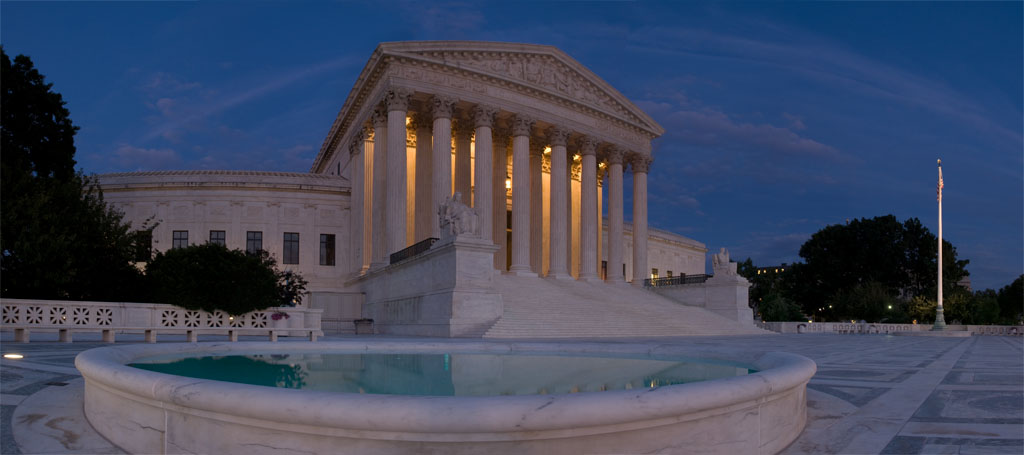The US Supreme Court Tuesday heard oral arguments in Merrill v. Milligan to determine whether Alabama’s 2021 redistricting plan for the US House of Representatives violates Section 2 of the Voting Rights Act (VRA). The lawsuit first arose back in November 2021 when Alabama Governor Kay Ivey signed the congressional plan allowing one majority Black district compared to six other, majority white, Republican US House districts.
Section 2 of the VRA prohibits discrimination in voting practices or procedures on the basis of race, color or membership in a minority group. Plaintiffs first brought suit against Alabama Secretary of State John Merrill, who is responsible for implementing and administering election law, alleging that the 2021 redistricting map specifically targeted and minimized the voices of Black voters in Alabama. Under the new map, even though Black voters account for 27 percent of Alabama’s population, they would likely only elect 14 percent of the state’s representatives to the US House.
In oral arguments, the attorney for Merrill claimed that the 2021 redistricting process in Alabama was conducted in a “lawful race neutral manner.” Merrill presented computer-drawn maps, demonstrating that even in completely simulated, race neutral instances, the mapping results would have been substantially the same. The core of Merrill’s argument focused on discouraging the court from seeing race as a redistricting principle. According to Merrill, adopting that standards would “make it harder to conform with traditional districting principles” and result in “a map that’s not going to do as well.”
Justices Ketanji Brown Jackson and Elena Kagan asked Merrill to justify why VRA compliance should be solely based on intent, instead of also examining the end result. Multiple justices asserted that prior case law does not demand that plaintiffs demonstrate discriminatory intent in proving that maps violated the VRA. Justice Sonia Sotomayor noted that a lower court found that a second majority-Black district could have been drawn using the same criteria that Merrill purportedly followed.
The attorney for Milligan spoke second in oral arguments. Milligan argued that, “[N]othing in the text of Section 2 allows Alabama to avoid liability by offering up these post hoc rationalizations of simulations and…maps that result in discrimination.” Milligan was followed by the attorney for Caster, representing voter plaintiffs in the lawsuit joined with Merrill’s, and U.S. Solicitor General Elizabeth Prelogar. Caster emphasized very similar points to Merrill. Prelogar asserted that Merrill seeks to change the VRA by inserting the concept of race neutrality and limiting Section 2 to instances of intentional discrimination.
Justices Samuel Alito, Amy Coney Barrett and Brett Kavanaugh questioned Milligan as to compactness requirements under the VRA, which require a district to be reasonably compact, asking if the plaintiffs were looking to maximize the number of districts that accounted for majority-minority representation. Milligan responded no, saying all the plaintiffs sought was a fair chance. Jackson interjected to note that the reason Section 2 of the VRA exists is because there is racial polarization and stratification. The second half of arguments also focused heavily on the value of computer simulations and how much weight should be given to them as a neutral mapping device.


